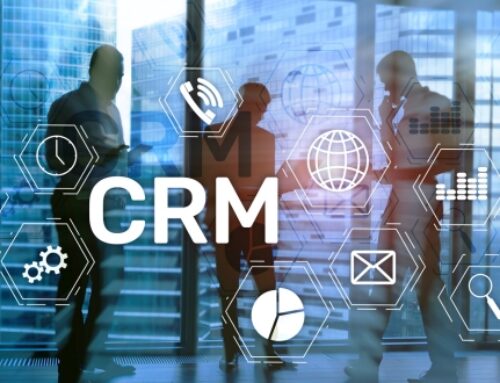Understanding Salesforce CRM Campaign Management
Campaign management in Salesforce CRM refers to the process of creating, executing, and tracking marketing campaigns aimed at engaging with customers and prospects. These campaigns can encompass various channels and tactics, including email marketing, social media advertising, events, and more. Salesforce provides a centralized platform where organizations can plan, execute, and measure the effectiveness of their campaigns, enabling them to optimize their marketing efforts and drive better results.
Key Features of Salesforce CRM Campaign Management
- Campaign Planning and Execution
Salesforce CRM offers robust tools for planning and executing marketing campaigns. Users can define campaign objectives, target audience segments, and messaging strategies within the platform. Campaign assets such as email templates, landing pages, and social media posts can be created and managed directly within Salesforce, streamlining the campaign creation process.
- Audience Segmentation
Effective targeting is crucial for the success of any marketing campaign. With Salesforce CRM, businesses can segment their audience based on various criteria such as demographics, behaviors, and past interactions. This allows marketers to deliver personalized messages to different segments, increasing engagement and conversion rates.
- Multi-Channel Campaigns
Modern marketing campaigns often span multiple channels, including email, social media, mobile, and offline channels. Salesforce CRM supports multi-channel campaign management, enabling organizations to orchestrate cohesive marketing experiences across all touchpoints. Marketers can track interactions and responses across channels, gaining insights into customer behavior and preferences.
- Automation and Workflow
Automation is a cornerstone of efficient campaign management. Salesforce CRM offers robust automation capabilities, allowing businesses to automate repetitive tasks, trigger personalized communications based on customer actions, and streamline campaign workflows. This not only saves time and resources but also ensures timely and relevant communication with customers.
- Measurement and Analytics
Measuring the effectiveness of marketing campaigns is essential for optimizing performance and maximizing ROI. Salesforce CRM provides robust analytics and reporting tools that allow marketers to track key metrics such as open rates, click-through rates, conversion rates, and campaign ROI. These insights help businesses understand what’s working and what’s not, enabling them to make data-driven decisions to improve future campaigns.
What is Campaign Management?
Campaign management within the context of Customer Relationship Management (CRM) involves the planning, execution, tracking, and analysis of marketing campaigns aimed at engaging with customers or prospects. These campaigns can encompass various channels such as email, social media, direct mail, events, and more. The primary goal is to effectively target and engage the right audience with the right message at the right time, ultimately driving desired actions or conversions.
In essence, campaign management helps businesses streamline their marketing efforts by providing a centralized platform to create, manage, and evaluate marketing campaigns. It allows marketers to organize their activities, segment their audience, deploy marketing assets, track responses, and measure campaign performance. By leveraging data and analytics, campaign management enables marketers to optimize their strategies, allocate resources efficiently, and improve overall marketing ROI.
Within the CRM context, campaign management is tightly integrated with customer data and insights. CRM systems like Salesforce offer robust campaign management functionalities that allow businesses to align their marketing efforts with customer relationships. Marketers can leverage CRM data to segment audiences based on demographics, behaviors, preferences, and past interactions. This segmentation enables personalized and targeted campaigns tailored to specific customer segments, enhancing engagement and driving conversion rates.
Salesforce Campaigns specifically:
Salesforce Campaigns serve as a pivotal tool within the Salesforce CRM platform for managing marketing initiatives and tracking their effectiveness. Here’s an overview of their key components:
- Purpose: Salesforce Campaigns are designed to help businesses plan, execute, and evaluate marketing campaigns across various channels. They provide a centralized hub for organizing marketing activities, tracking leads and responses, and measuring campaign performance.
- Structure: Salesforce Campaigns are structured entities that contain relevant information about a specific marketing initiative. They typically include details such as campaign name, start and end dates, objectives, budget, associated marketing assets (such as emails, landing pages, and advertisements), targeted audience segments, and campaign members (leads or contacts associated with the campaign).
Benefits for Businesses: Salesforce Campaigns offer several benefits for businesses, including:
- Streamlined Campaign Management: By centralizing campaign-related data and activities, Salesforce Campaigns enable marketers to efficiently plan, execute, and monitor marketing campaigns.
- Improved Targeting and Personalization: Businesses can leverage CRM data to segment audiences and tailor campaigns to specific customer segments, leading to higher engagement and conversion rates.
- Better Tracking and Measurement: Salesforce Campaigns provide robust tracking and reporting capabilities, allowing businesses to monitor campaign performance in real-time, track leads and responses, and measure key metrics such as ROI and conversion rates.
- Enhanced Collaboration: Salesforce Campaigns facilitate collaboration among marketing teams by providing a centralized platform for sharing campaign-related information, assets, and insights.
- Integration with Sales Processes: Salesforce Campaigns seamlessly integrate with sales processes, enabling marketers to track the impact of marketing campaigns on sales pipeline and revenue generation.
Salesforce Campaigns play a vital role in helping businesses effectively manage their marketing initiatives within the CRM context, driving engagement, conversions, and ultimately, revenue growth.
Setting Up Salesforce Campaigns
- Creating Campaigns in Salesforce: This involves step-by-step guidance on how to create campaigns within Salesforce. Users typically navigate to the Campaigns tab and click on “New Campaign” to initiate the process. They’ll need to fill in details such as campaign name, type, status, start and end dates, budget, and more. This step ensures that all marketing efforts are properly categorized and tracked within the system.
- Campaign Hierarchy: Salesforce offers a hierarchical structure for organizing campaigns, allowing users to categorize campaigns into parent and child campaigns. Parent campaigns serve as the overarching category, while child campaigns are specific initiatives or tactics within those categories. Understanding and effectively utilizing this hierarchy helps in organizing campaigns in a logical and manageable manner.
- Campaign Member Management: Managing campaign members involves efficiently tracking individuals or contacts associated with a specific campaign. This includes capturing leads, contacts, and other relevant records that interact with the campaign. Salesforce provides features for adding members manually or automatically through various means such as lead capture forms, email campaigns, and more. Proper management of campaign members is crucial for tracking engagement metrics and measuring the success of marketing efforts.
- Campaign Attribution Models: Attribution models in Salesforce refer to the methods used to assign credit to marketing touchpoints for influencing revenue generation. These models help businesses understand the effectiveness of their campaigns and allocate resources accordingly. Salesforce offers various attribution models, such as first-touch, last-touch, linear, and custom models, each with its own methodology for attributing revenue to different stages of the customer journey. Exploring and selecting the appropriate attribution model is essential for accurately evaluating the impact of campaigns on overall revenue and ROI.
Setting up Salesforce campaigns involves a combination of strategic planning, proper configuration within the platform, and ongoing management to effectively track and measure marketing initiatives’ success. By following best practices and utilizing Salesforce’s capabilities, businesses can optimize their marketing efforts and drive better results.
Leveraging Campaigns for Marketing Automation
Leveraging Campaigns for Marketing Automation involves utilizing various tools and strategies to automate and optimize marketing campaigns effectively.
Integrating Campaigns with Marketing Automation:
This involves connecting Salesforce Marketing Cloud and Pardot (both are popular marketing automation platforms) with your campaign management system. By integrating these tools, you can automate various aspects of your campaigns, such as email sends, lead nurturing, and customer journeys, which helps save time and resources while ensuring consistency and effectiveness across different channels.
Personalization and Segmentation:
Personalization involves tailoring marketing messages and content to individual customers based on their preferences, behavior, and demographics. Segmentation, on the other hand, involves dividing your audience into specific groups based on common characteristics. By leveraging segmentation features within Salesforce Campaigns, marketers can create highly targeted and personalized campaigns that resonate with different segments of their audience, leading to better engagement and conversion rates.
Campaign Automation:
Campaign automation refers to the process of setting up predefined workflows and triggers to automate various marketing tasks and processes. This includes sending automated follow-up emails, nurturing leads through a series of targeted communications, and assigning tasks to sales representatives based on specific actions taken by prospects. Designing automated campaign workflows helps marketers streamline their processes, reduce manual intervention, and ensure timely and relevant interactions with leads and customers.
A/B Testing and Optimization:
A/B testing, also known as split testing, is a method used to compare two versions of a marketing asset (such as an email, landing page, or ad) to determine which one performs better in terms of achieving the desired objective (e.g., click-through rate, conversion rate). By conducting A/B tests, marketers can identify elements that resonate most with their audience and optimize their campaigns accordingly to improve overall performance and achieve better results.
Leveraging campaigns for marketing automation involves integrating automation tools, implementing personalized strategies through segmentation, designing automated workflows, and continuously optimizing campaigns through A/B testing. This approach allows marketers to manage and optimize their campaigns efficiently, ultimately driving better engagement, conversion, and ROI.
Analyzing Campaign Performance
Analyzing campaign performance is a crucial aspect of any marketing strategy, and leveraging tools like Salesforce can greatly enhance the process. Here’s a deeper dive into each aspect:
Reporting and Analytics:
Salesforce offers a suite of robust reporting tools that allow marketers to track key performance metrics such as conversion rates, click-through rates, customer engagement, and more. By analyzing these metrics, marketers can gain insights into what’s working and what’s not, enabling them to make data-driven decisions to optimize their campaigns.
Campaign Dashboards:
Custom dashboards provide a visual representation of campaign performance, allowing marketers to monitor progress in real-time. These dashboards can be tailored to display the most relevant KPIs and metrics, providing a comprehensive overview of campaign effectiveness at a glance. Marketers can quickly identify trends, spot areas for improvement, and make timely adjustments to their strategies.
ROI Analysis:
Conducting ROI analysis is essential for evaluating the effectiveness of marketing campaigns and determining their impact on the bottom line. By comparing the cost of running a campaign to the revenue generated or other defined business goals, marketers can assess whether their marketing efforts are delivering a positive return on investment. This analysis helps justify marketing expenditures and allocate resources more efficiently in future campaigns.
Iterative Improvements:
Armed with insights from performance analytics and ROI analysis, marketers can implement iterative improvements to enhance the effectiveness of future campaigns. This involves identifying areas where optimizations can be made, such as refining targeting criteria, adjusting messaging, optimizing ad creatives, or testing different campaign strategies. By continuously iterating and optimizing their campaigns based on data-driven insights, marketers can drive better results and maximize ROI over time.
Advanced Strategies
Multi-Channel Campaign Management:
This approach involves coordinating marketing efforts across various channels such as email, social media, advertising platforms, and more within the Salesforce ecosystem. It aims to ensure consistent messaging and branding across all channels while leveraging the strengths of each platform to reach and engage with target audiences effectively. Within Salesforce, this could involve setting up automated workflows to trigger personalized communications based on customer interactions across different channels, tracking campaign performance metrics across channels in a centralized dashboard, and optimizing campaigns based on real-time insights.
Predictive Analytics:
Predictive analytics involves utilizing historical data, statistical algorithms, and machine learning techniques to forecast future outcomes and behaviors. In the context of Salesforce Campaign Management, predictive analytics can be used to predict the success of marketing campaigns, identify the most promising leads or prospects, and optimize resource allocation by focusing efforts on the most likely to convert targets. This could involve analyzing past campaign performance data, demographic information, behavioral data, and other relevant factors to build predictive models that guide decision-making and improve campaign effectiveness over time.
Account-Based Marketing (ABM):
ABM is a strategic approach to B2B marketing that involves targeting specific high-value accounts with personalized marketing efforts tailored to their unique needs and characteristics. Within Salesforce Campaigns, ABM strategies can be implemented by segmenting target accounts based on various criteria such as industry, company size, revenue, or geographic location, and delivering highly targeted content and messaging to engage decision-makers within those accounts. This may involve leveraging Salesforce’s account and lead scoring capabilities, integrating with marketing automation platforms for personalized content delivery, and tracking engagement metrics at the account level to measure the effectiveness of ABM initiatives.
Integration with Third-party Tools:
Salesforce offers a wide range of native marketing tools and capabilities, but organizations may also benefit from integrating with third-party marketing tools to augment their campaign management capabilities. This could include integrating with popular email marketing platforms, social media management tools, advertising platforms, analytics tools, and more to streamline workflows, enhance data insights, and improve overall campaign performance. Integration possibilities might include syncing customer data between Salesforce and external systems, automating cross-channel campaign execution, leveraging advanced analytics and reporting capabilities, and providing a seamless experience for marketers and customers across different touchpoints.
Best Practices for Salesforce CRM Campaign Management
1. Set Clear Objectives
Before launching a campaign, define clear objectives and key performance indicators (KPIs) that align with your business goals. Whether it’s increasing brand awareness, driving lead generation, or boosting sales, having clearly defined objectives will guide your campaign strategy and measurement efforts.
2. Know Your Audience
Understanding your target audience is essential for crafting relevant and impactful campaigns. Use Salesforce CRM’s segmentation capabilities to divide your audience into distinct segments based on demographics, behaviors, and preferences. Tailor your messaging and offers to resonate with each segment’s needs and interests.
3. Leverage Automation
Take advantage of automation to streamline campaign execution and enhance efficiency. Set up automated workflows to handle tasks such as lead nurturing, email follow-ups, and campaign tracking. Automation not only saves time but also ensures consistency and accuracy across your marketing efforts.
4. Personalize Content
Personalization is key to engaging today’s consumers. Use Salesforce CRM’s data insights to personalize your campaign content and messaging based on each recipient’s preferences and past interactions. Personalized communication fosters stronger connections with your audience and drives higher engagement and conversion rates.
5. Monitor and Optimize
Monitor the performance of your campaigns in real time and use Salesforce CRM’s analytics tools to track key metrics. Identify areas of improvement and test different elements such as subject lines, calls-to-action, and targeting criteria to optimize your campaigns for better results. Continuously iterate and refine your approach based on data insights.
Case Studies and Success Stories
Case studies and success stories provide invaluable insights into how businesses have effectively utilized Salesforce Campaign Management to achieve their marketing goals. These real-world examples offer concrete evidence of the platform’s capabilities and showcase innovative strategies implemented by various organizations. Here’s a deeper dive into what these case studies and success stories entail:
Real-world Examples:
- These case studies delve into specific instances where businesses have utilized Salesforce Campaign Management to drive successful marketing campaigns. They typically outline the challenges faced by the organization, the objectives they aimed to achieve, the strategies implemented using Salesforce Campaign Management, and the outcomes obtained.
- For instance, a case study might highlight how a retail company utilized Salesforce Campaign Management to segment their customer base, personalize marketing messages, and increase sales conversions. It could detail the specific features and functionalities of the platform that were instrumental in achieving these results.
Best Practices from Industry Leaders:
- Extracting insights and best practices from industry leaders and top-performing organizations provides valuable guidance for businesses looking to optimize their campaign management processes.
- Industry leaders often share their experiences, lessons learned, and innovative approaches to campaign management, offering actionable advice for other businesses to emulate.
- These best practices encompass a wide range of areas, including campaign planning, audience segmentation, content creation, omnichannel integration, performance tracking, and optimization.
- For example, a leading e-commerce company might share their best practices for leveraging Salesforce Campaign Management to deliver personalized product recommendations, automate email marketing workflows, and analyze campaign performance in real-time.
- By studying these case studies and success stories, businesses can gain valuable insights into how Salesforce Campaign Management can be effectively utilized to achieve their marketing objectives.
Conclusion
Salesforce CRM campaign management is a powerful tool for businesses looking to optimize their marketing efforts and drive success. By leveraging features such as audience segmentation, multi-channel campaigns, automation, and analytics, organizations can create targeted, personalized campaigns that resonate with their audience and deliver tangible results. By following best practices and continuously monitoring and optimizing their campaigns, businesses can unlock the full potential of Salesforce CRM to achieve their marketing goals and drive growth in today’s competitive landscape.
Salesforce CRM Campaign Management helps businesses streamline their marketing efforts by providing tools to create targeted campaigns, track responses, analyze campaign effectiveness, and optimize future campaigns based on data-driven insights.
Key components include campaign creation, segmentation of target audiences, creation and customization of marketing assets (emails, landing pages, etc.), campaign execution through various channels, tracking of responses and conversions, and performance reporting.
Yes, Salesforce CRM Campaign Management offers integration capabilities with various marketing tools and platforms such as email marketing tools, social media platforms, advertising networks, and analytics tools. This allows businesses to create unified marketing campaigns across multiple channels.
Salesforce CRM Campaign Management allows businesses to segment their target audience based on various criteria such as demographics, behavior, purchase history, and engagement level. This segmentation enables businesses to deliver more personalized and relevant marketing messages to different segments.
Businesses can create various types of campaigns including email campaigns, social media campaigns, advertising campaigns, event campaigns, and multi-channel campaigns that combine different marketing channels for maximum impact.








